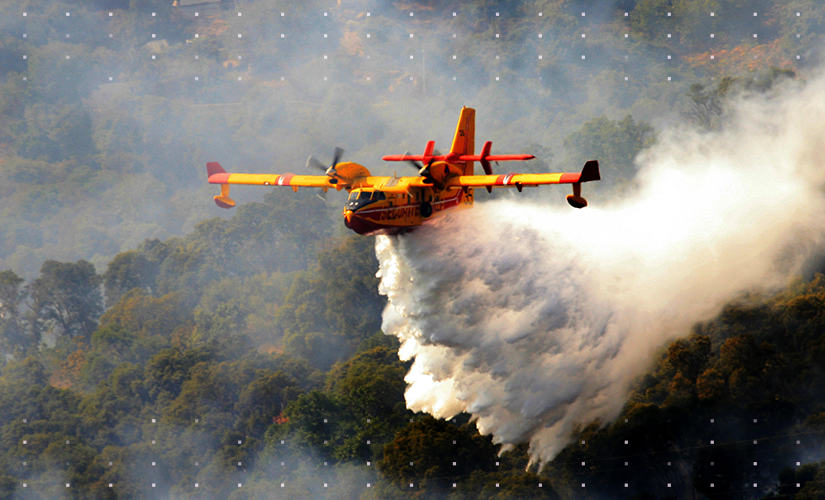The Charitable Challenge of Natural Disasters
August 15, 2024
6 min read
Can we turn our initial rush of compassion into support that lasts long after the smoke clears?
Another Canadian summer, another round of devastating wildfires tearing their way through forests, communities, and livelihoods. It’s become the worst of summer traditions—we watch from our screens as flames devour another place we love, and we’re compelled to act.
This instinct to roll up our sleeves and help is one of humanity’s finest traits. The challenge lies in channelling that innate compassion toward proactive and strategic giving that fuels both short and long-term support.
The Big Rush to Help
Canadians are known for their generosity and willingness to help those in need, especially during times of crisis and disaster. Donations flood in at the height of the crisis and the immediate aftermath of a disaster when the devastation is front and centre and emotions are high. But as time passes and news cycles shift, public attention moves on, and the flow of donations slows to a trickle.
This is a common pattern, and it’s certainly not new. The Center for Disaster Philanthropy estimates that one-third of all giving is completed within one to four weeks of a disaster occurring, two-thirds of giving is completed one to two months after the disaster, and giving has all but stopped six months post-disaster.
This collective reaction to large-scale disasters can feel a bit like a revolving door–our natural instinct is to help, but our attention span is limited. Once the initial shock and urgency fade from public consciousness, news outlets move on to the next thing, and would-be donors follow suit.
The Slow Burn to Rebuild
The media plays a vital role in raising awareness and rallying support for immediate needs and vital relief efforts. However, the constant churn of news can move quickly from one crisis to the next, leaving affected communities wrestling with long-term hurdles and limited resources. Charities are often left holding the bag, struggling to keep the public engaged.
Ultimately, the long-term recovery phase rarely receives the same attention or urgency as the immediate response. While immediate relief efforts provide crucial support, this timing mismatch is a major obstacle that can prolong the recovery process and neglect the ongoing needs of those struggling to overcome the aftermath. Rebuilding and healing from large disasters can be a complex and lengthy process that requires a long-term strategy and commitment.
Strategic Giving for Lasting Support
Addressing large-scale disasters like wildfires requires a cultural shift toward proactive, strategic, and sustainable giving.
1. Plan ahead for reactive giving
Emergencies should fuel, not diminish, the need for meticulous planning and strategic thinking. Instead of waiting for the storm to hit, plan ahead and set aside funds to help when you feel called to.
You can budget for charitable giving just like you budget for your expenses. By building giving into our routine, we can infuse our generosity with strategy and intention, elevating its impact and ensuring resources are readily available when urgency knocks.
2. Focus on long-term impact
All donors don’t need to be first responders. Recovering from disasters can take years, but the lion’s share of disaster-related donations happens during the first critical days, leaving the arduous work of reconstruction and recovery without enough resourcing.
Charities across the sector need more consistent long-term funding in order to plan ahead for annual programs. “When thinking about giving, one of the best ways to support humanitarian organizations is to contribute via regular donations, not tied to a specific emergency or context,” says Catheryne Gagnon, Bilingual Press Officer at Médecins sans frontières/Doctors Without Borders (MSF).
“This allows organizations to monitor needs and to be more flexible and reactive by drawing from these general emergency funds when resources are needed to act,”
3. Harness the donation surge
In the context of wildfires, Giving Groups can play a big role in bridging the gap between immediate relief and long-term recovery efforts. By establishing a dedicated wildfire relief Giving Group, donors can contribute to a sustainable pool of resources that can be deployed effectively throughout the entire recovery process.
Giving Groups can also provide a way to maintain momentum and engagement beyond the immediate crisis period. By facilitating ongoing communication and collaboration among donors and recipients, support can continue to flow to affected communities long after the initial surge in donations has receded.
4. Do your due diligence
Invest some time in researching charities and understanding the nuance of the crisis itself. Doing your due diligence will help you pinpoint the organizations that reflect your vision for change and ensure your contributions reach trustworthy and impactful hands.
The Better Business Bureau (BBB) has warned of bad actors taking advantage of wildfires through donation scams. Before donating, always verify the legitimacy of any charities and crowdfunding campaigns. Charitable Impact’s list of Canadian registered charities is updated weekly, so you can search and know that if the charity is on the list, it is legitimate and in good standing with the CRA.
Once you’ve identified some organizations or programs that resonate with you, take the initiative to reach out. Don’t shy away from asking charities direct questions about how your contributions will be utilized. Understanding the specifics of your impact is not just empowering; it’s key to fulfillment and longevity in your giving journey.
When you create an Impact Account, you join a community that believes in building a brighter future. Discover how an Impact Account empowers you to support what you care about with more purpose, joy, and impact.

